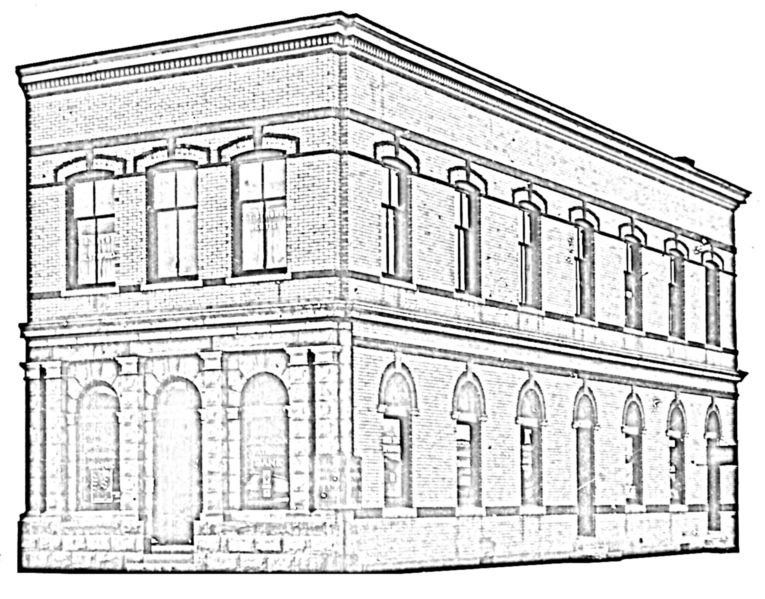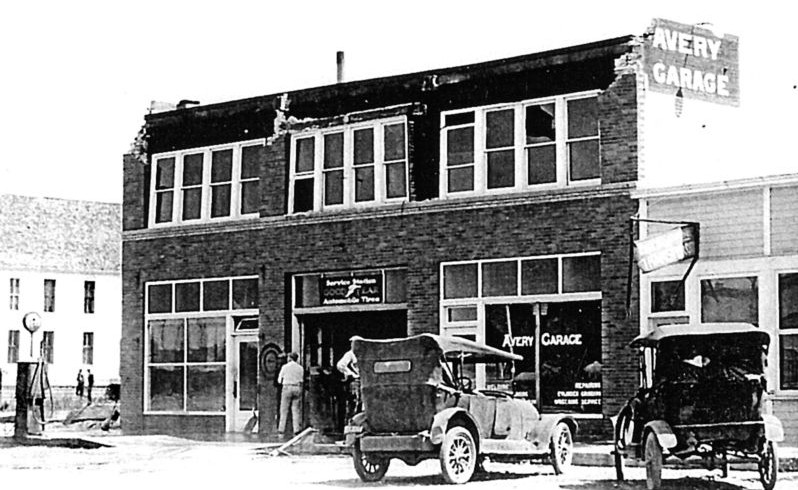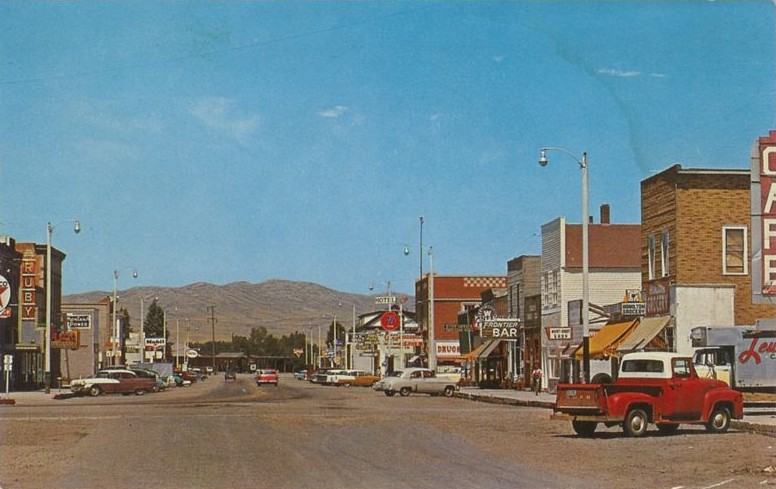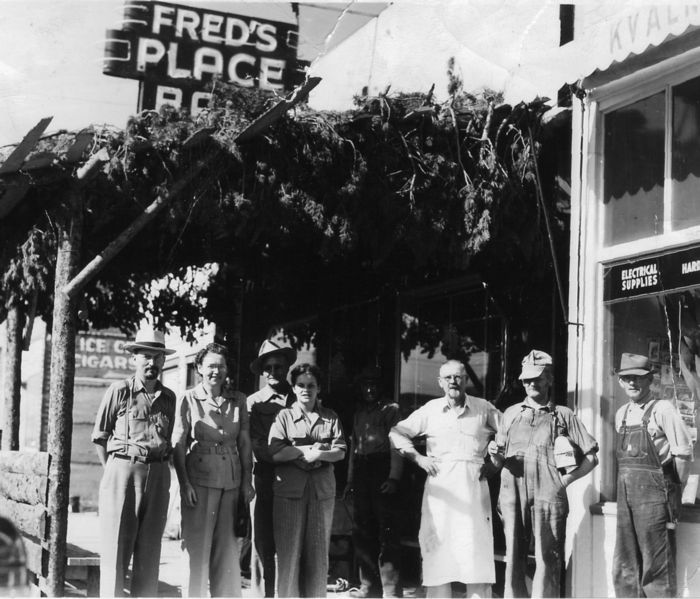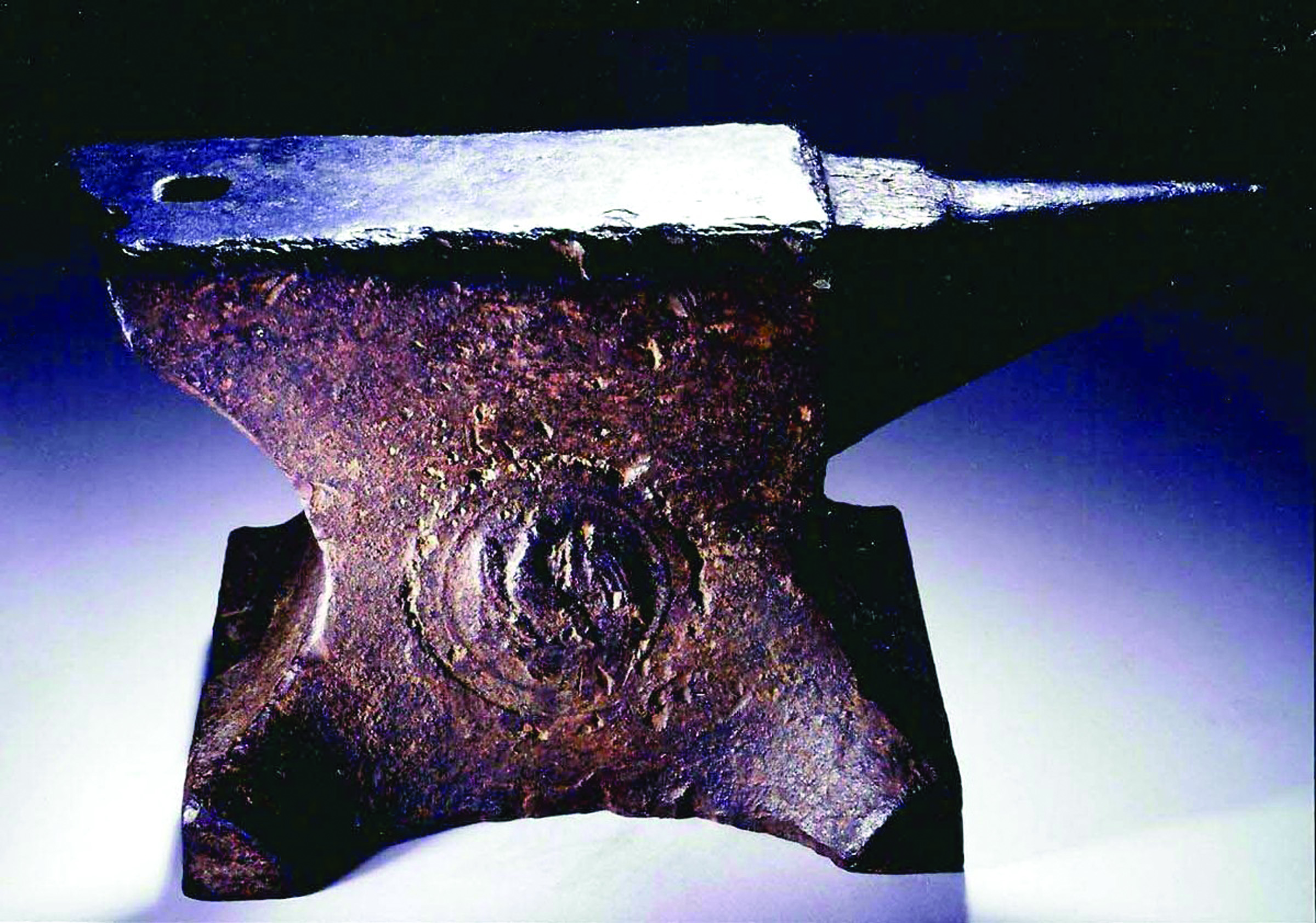In the late 1970s, locals formed a chapter of the Pioneer Society. Ideal Cement Company provided the first seven items
in the Society's collection, furniture from the old Trident School. A small museum was opened in a room in the
Sacajawea Hotel, but was soon out of space. In 1982, there was enough interest to form an independent organization. The Three
Forks Area Historical Society began raising funds for their own building.
The Headwaters Heritage Museum was originally built in 1910 as the Three Valleys State Bank. Three banks were operating in those
early days, Three Valleys State Bank, First National Bank and Labor National bank. Doctors and other professional rented out the rooms
on the second floor of the bank. In 1917, the Three Valleys State Bank became the American National Bank.
By the early to mid-1920s, all three banks in Three Forks were out of business because of the Great
Depression. Various businesses operated out of the building for over 60 years. The building became a bank again in the mid-1960s as
Security Bank of Three Forks. By 1980, First Security Bank had outgrown its space and built a new bank a block south. Bank
President Jack Rochford gave the society a good deal on their old building.
In 1980, the Society's collection consisted of 90 items. In 1982, after the fundraising and purchase of the bank building, the
Society recieved over 750 items for its collection. Among those early acquisitions was the first set of 571 different barbed wires
collected by James Britzius (it was later increased to 701 pieces), the Fisher Eagle Anvil (Montana's oldest anvil), Rod &
Charlotte Frick's Johnston/Robertson Drug Store collection, and the Chester Bales carvings collection (285 pieces from the
Buttleman, Frick and Jeglum families). Today, the Society's collection is over 9,000 items.
Dave and Norma Miller, who were among the founding members of the Society, contributed more than 200 items in their lifetimes, many
of which were from their time spent in the village of Trident. In 2007, Mike Peccia donated more than 180 items from his personal
collection of Milwaukee Railroad memorabilia. The Miller and Peccia collections would later become the heart of the
Railroad & Trident Heritage Center collection.
Even before the museum was purchased, another type of collection was being created. The 1979 Book Committee set the scope
of the museum's collection by embracing the stories of the communities of the headwaters area. Family and local histories
from Clarkston, Logan, Lombard, Trident, Milligan Canyon, Sappington, "the Lane District," Willow Creek, the North Bench,
Gallatin Cities, Old Town and Three Forks were collected and compiled into the Headwaters Heritage History, published
in 1983. Although out of print, this book is available on-line at
The Montana Memory Project.
The Headwaters Heritage Museum holds many items, all of which have a story, whether common or unique. Tools, toys, books
and bridles tell the common stories of every day life in communities of the area. Other items, like Montana's second largest German brown
trout (caught by Peck Bacon), or the Fisher Eagle anvil (first described by Lt. Bradley in 1865) tell the story of extraordinary days and
legendary times.
The Headwaters Heritage Museum is dedicated to the preservation of the local culture and relics of the people and communities of the
Missouri River Headwaters area.
LINKS
Coming Soon -- Virtual Headwaters Heritage Museum
